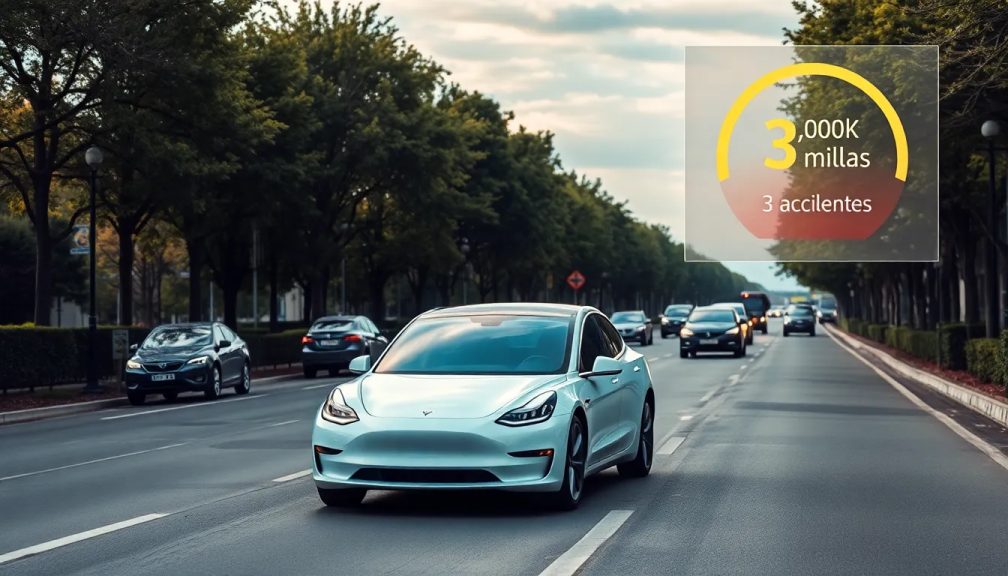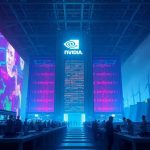Tesla robotaxi test results show three crashes in 7,000 miles

As the race towards fully autonomous vehicles intensifies, Austin, Texas has emerged as a critical testing ground for various companies. The city offers a combination of favorable regulatory conditions, spacious roads, and a climate that supports extensive testing. However, the debut of Tesla's Robotaxi service has been met with significant challenges, raising questions about the future of autonomous driving technology.
With the launch of Tesla's Robotaxi service in Austin earlier this summer, many anticipated a significant leap in autonomous vehicle technology. However, the reality has been far from the expectations. In just a few short weeks, Tesla's performance has been scrutinized following a series of concerning incidents that have put the company's ambitious goals under the microscope.
- What went wrong with Tesla's Robotaxi test in Austin?
- Comparative safety analysis of autonomous vehicle technology
- Understanding the driving errors in Tesla's Robotaxi
- The implications of Tesla's challenges for the autonomous vehicle industry
- Insights from real-world testing experiences
- Future directions for Tesla and autonomous vehicles
What went wrong with Tesla's Robotaxi test in Austin?
On July 1, the very first day of testing, Tesla's Robotaxi service faced a troubling start, logging three crashes within a mere 7,000 miles of operation. This alarming statistic has sent shockwaves through the autonomous driving community, particularly when compared to competitors like Waymo, which has sustained a crash rate significantly lower than Tesla's during its extensive testing.
The initial findings from Tesla's crash reports indicate that:
- Two of the incidents involved other vehicles rear-ending the Tesla Model Y.
- One crash occurred due to a collision with a stationary object while a safety operator was present.
- One additional crash was reported but not included in the official statistics, as it occurred in a parking lot.
Such a high crash rate raises critical questions about the reliability of Tesla's technology and its readiness for public roads. The company's CEO, Elon Musk, acknowledged these issues during a less-than-stellar quarterly earnings call, further emphasizing the challenges ahead for Tesla in this competitive sector.
Comparative safety analysis of autonomous vehicle technology
When examining Tesla's Robotaxi performance, it's essential to compare it with other players in the autonomous vehicle landscape. Waymo, for instance, has completed over 96 million miles of testing, resulting in merely 60 reported crashes. This stark contrast highlights the pressing need for Tesla to address its safety concerns effectively.
| Company | Miles Driven | Reported Crashes | Crash Rate (Crashes per Million Miles) |
|---|---|---|---|
| Tesla | 7,000 | 3 | 428.57 |
| Waymo | 96,000,000 | 60 | 0.625 |
These figures underscore the challenges Tesla faces in proving the safety and reliability of its autonomous driving technology. With such a high crash rate, Tesla's reputation as a leader in this field may be at stake.
Understanding the driving errors in Tesla's Robotaxi
The driving errors exhibited by Tesla's Robotaxi have attracted federal scrutiny, as they raise serious concerns about the system's operational capabilities. Among the notable issues are:
- Inability to navigate around stationary obstacles effectively.
- Failure to recognize and react appropriately to traffic conditions.
- Inadequate response times to sudden changes in the driving environment.
These errors not only compromise the safety of passengers but also pose risks to other road users. Tesla's reliance on advanced algorithms and artificial intelligence has yet to yield the reliability needed for public deployment, as evidenced by these incidents.
The implications of Tesla's challenges for the autonomous vehicle industry
The struggles faced by Tesla's Robotaxi service may have broader implications for the autonomous vehicle industry as a whole. Public perception of safety is paramount, and continued incidents of this nature could lead to increased regulatory scrutiny and public skepticism.
Moreover, as companies race to develop reliable autonomous systems, the need for rigorous testing and validation becomes increasingly critical. Tesla's current predicament serves as a cautionary tale for others in the industry, emphasizing the importance of a robust safety framework and transparent reporting of testing outcomes.
As Tesla navigates through these challenges, the lessons learned could inform not just their future developments but also the strategies of other companies vying for a stake in the autonomous vehicle market.
Insights from real-world testing experiences
The insights gathered from real-world testing of Tesla's Robotaxi are invaluable. Videos such as "I Rode Tesla's Robotaxi 50 Times. Here's What Went Wrong ..." provide firsthand accounts of user experiences, detailing both the promising aspects and the glaring shortcomings of the technology.
Such firsthand experiences contribute to a more nuanced understanding of the challenges faced by autonomous vehicle systems. By learning from these real-world applications, companies can refine their technologies and improve safety protocols.
Future directions for Tesla and autonomous vehicles
The future of Tesla's Robotaxi and autonomous vehicles hinges on the company's ability to address its current shortcomings. Continuous improvement in software algorithms, enhanced sensor capabilities, and a commitment to safety will be essential for regaining public trust and ensuring successful deployment.
As the industry evolves, collaboration with regulatory bodies, investment in research, and a focus on transparent communication with the public will be critical. The road ahead is undoubtedly challenging, but with concerted effort and innovation, Tesla and other players in the market can work towards a safer and more reliable autonomous driving future.




Leave a Reply